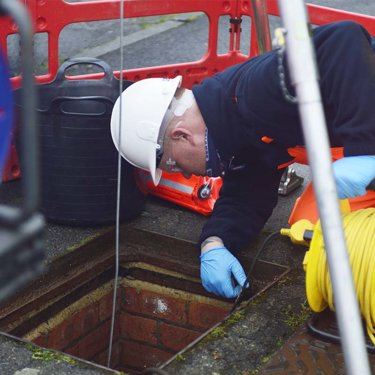6 common causes of drainage failure and how to address them
2 January 2020
Facilities managers, risk managers and property managers are constantly on the lookout for issues involving business-critical assets which could result in costly downtime. Some are easier to identify than others. Failures in IT or factory production systems are often immediately apparent and relatively manageable with the right back-up measures in place. External building elements and fleet visibly age and deteriorate, so monitoring and keeping on top of maintenance needs is straightforward.
Drainage is a different story. Because it’s below the ground and out of sight, a potential problem is harder to identify and foresee. Faults often make their presence felt when it’s too late to prevent an escalation into a large-scale problem which could require expensive and disruptive excavation. So what areas of potential risk should businesses be wary of? We’ve listed six of the most common causes of drainage failures and how they can be addressed.
Cause 1: Tree roots
Mother Nature is a powerful force. You’ve probably seen somewhere a collapsed wall caused by the outward growth of tree roots. What you probably haven’t seen is the damage this can do to an underground pipe – it’s a very common cause of drainage failure. Tree roots will often penetrate pipework, causing blockages at first, but, if not arrested, these lead to the pipe fracturing and leaks that may create issues with the Environment Agency. If your business premises include grounds with trees, and mature trees especially, this represents a potential area of concern.
The solution
Fortunately, methods are available to remove any root intrusion without damaging the pipe or requiring expensive excavation. Root cutting equipment can quickly and effectively remove the root intrusion in the short term and either a lining or patch repair over the joint or defect will prevent the roots growing back into the pipe.
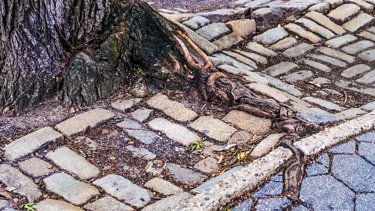
Cause 2: Land movement and subsidence
Land subsidence occurs when large amounts of groundwater have been withdrawn from certain types of rocks, such as fine-grained sediments. The rock compacts because the water is partly responsible for holding the ground up. When the water is withdrawn, the rocks falls in on themselves. Land movement, subsidence and water infiltration washing away sub soils can lead to encrustations which impede the drainage capability of pipes.
Land subsidence is often caused by human activities - such as the removal of subsurface water - as well as aquifer-system compaction, drainage of organic soils, mining, hydro-compaction, natural compaction, sinkholes and thawing permafrost. All of these present a potential threat to drainage systems, but subsidence can also represent the symptom of a faulty pipe rather than the cause. In other words, if you see evidence of land subsidence, it may be due to a cracked drain leaking water and softening the ground. Worse still, it could be the result of a collapsed drain. This will require urgent attention but it’s highly likely that your drainage network – and your business operation – has already been disrupted.
The solution
Encrustation will need removing with either a milling or robotic cutter. Once they have been removed, the best solution is lining or patch repair over the joint or defect to seal the pipework and prevent further leakage.
Cause 3: The impact of industrial and heavy goods traffic
The speed of wear and tear on any ground is accelerated by the volume and weight of passing traffic. This is where certain locations can be vulnerable – for example, motorways and busy A-roads, industrial sites and distribution centres are subject to a high volume of heavy goods vehicles. For example, the impact of a fleet of 44-tonne trucks passing through daily will inevitably take its toll over time. Eventually it could lead to a pipe fracture or even a pipe collapse.
The solution
Unfortunately, the solution will usually involve excavation. However, it may be possible to line or patch the pipework, depending on the extent of the damage and deformation.
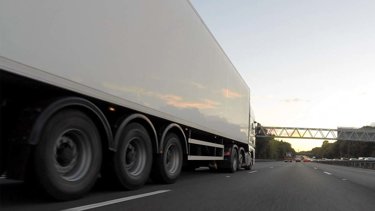
Cause 4: Attack from chemical waste such as sugar or acid
A large percentage of Jet Aire’s business is in the chemical processing and drink manufacturing sectors and it’s easy to understand why. Most chemical waste reacts with pipework fabric to accelerate its deterioration. As a result, chemical production sites are known for a higher rate of drainage failure than other manufacturing sites. When this happens, it carries the risk of damaging the surrounding area with the leakage of toxic chemical waste. This compounds the problem with the likelihood of a hefty fine by the Environmental Agency and negative headlines in the media. Drink manufacturing is another industry prone to high rates of drainage failure. Again, the problem is caused by the nature of the product – most drinks contain sugar and acids which break down the fabric of pipes. The deterioration can develop surprisingly quickly - sugar is abrasive to concrete and bacterial digestion will eat away at pipes. If a drainage leak does occur, drinks manufacturers pose a similar environmental risk – with all the problems that entails.
The solution
The best solution is a preventative measure - in the case of pipework, it is possible to apply a pipe liner with a specialist resin which is resistant to chemical attack. If you operate a chemical or food production site, or your business is located near to one, we would recommend consulting a drainage company to provide a professional assessment and advise appropriate measures to eliminate the risk of any faults or failures arising in the future.
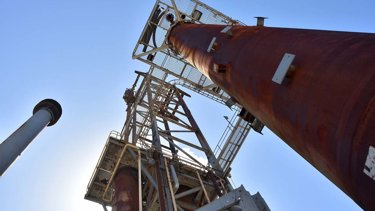
Cause 5: Pipe infiltration leading to encrustations
Pipe defects don’t necessarily have to result from a specific outside (or inside) agent - in many cases, simple wear and tear takes its toll over time, weakening joints and seals. When a seal is no longer water-tight, infiltration can lead to a build-up of encrustations which reduces the efficiency of drainage flow and can eventually cause more severe problems.
The solution
This issue can usually be addressed quickly and easily with a lining or patch repair over the joint or defect to seal the pipework and prevent further leakage. Encrustation can be removed with either a milling or robotic cutter.
Cause 6: Site activity
Activity on site, such construction and civil engineering, often poses a significant risk of damaging a drainage network. Contractors piling through pipes is a common accident which arises from a failure to identify the depth of the drain or check whether there are drains running beneath the footprint of a proposed building or extension.
Building Regulations stipulate that, when building within 3m of a public sewer, or within 1m of a public lateral drain, water authority approval is required before work commences. Even if the drain is not a public sewer or shared drain, failure to identify the location of the drain can still cause major issues if there is a conflict between the line of the drain and the line of the structure above. Many cases of pipe damage are caused by site activity which neglects these considerations.
The solution
Unfortunately, these kinds of incidents typically require excavation and replacing the pipe or diverting it away from the pile. It is sometimes possible to remove the pile, if it is only partially obstructing the drain, with a robotic cutter.
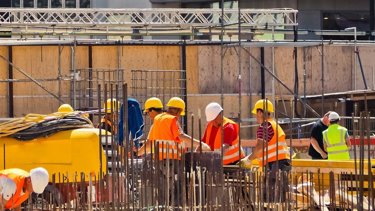
The best way avert risk
The conditions outlined above present a high risk of drainage failure, but they are certainly not the only causes of damage or deterioration. It’s impossible to account for everything. Ultimately, identifying potential problems above ground is merely a warning signal to future risk. The only way to comprehensively assess the probability of failure is going underground. That means a CCTV Condition survey, which can inspect every element of your drainage system, from pipes to manhole chambers.
An investment in a CCTV Condition survey is relatively modest when you consider the costs that could be saved by avoiding expensive repairs, disruption and downtime. For example, if a CCTV Condition survey identifies a cracked pipe or displaced joint, this can be easily remedied with CIPP patching or lining or UV lining. Without a CCTV Condition survey to identify the weakness, the pipe could eventually collapse and the cost of excavation and relaying a pipe could run well into six figures, especially when you factor in downtime to the business. With that in mind, you could save at least half of that cost with an investment in lining to strengthen pipes, providing decades of failure-free drainage and zero downtime. Ultracoating - a structural epoxy coating application used to coat manholes, bunds and tanks and prevent them from chemical attack.
If you think that your business premises could be prone to drainage failure, or you simply want some advice on assessing potential risk, please get in touch with our friendly team of professionals to discuss your concerns.
Here to keep your drainage flowing freely
Our experts are available to quickly diagnose issues, provide cost-effective solutions, and carry out routine maintenance to get your drainage network back to normal as soon as possible.
Speak to our experts